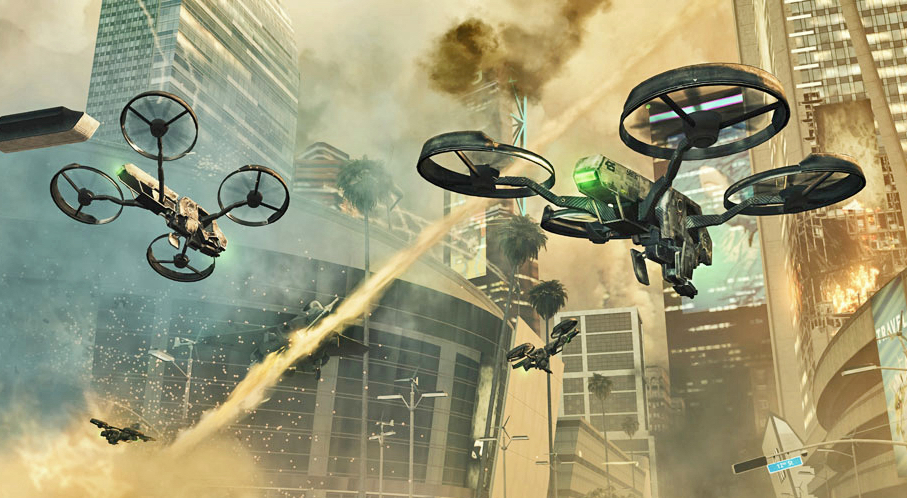U.S. Secretary of Transportation Elaine L. Chao announced today (May 9, 2018) that 10 state, local, and tribal governments have been selected* as participants in the U.S. Department of Transportation’s Unmanned Aircraft Systems (UAS) Integration Pilot Program.
The goal of the program: set up partnerships between the FAA and local, state and tribal governments. These will then partner with private sector participants to safely explore the further integration of drone operations.
“Data gathered from these pilot projects will form the basis of a new regulatory framework to safely integrate drones into our national airspace,” said Chao. Over the next two and a half years, the team will collect drone data involving night operations, flights over people and beyond the pilot’s line of sight, package delivery, detect-and-avoid technologies and the reliability and security of data links between pilot and aircraft.
North Carolina has been selected to test medical delivery with Zipline’s drones, which have been
tested in more than 4000 flights in Rwanda, according to MIT Technology Review
At least 200 companies were approved to partner in the program, including Airbus, Intel, Qualcomm, Boeing, Ford Motor Co., Uber Technologies Inc., and Fedex (but not Amazon).
“At Memphis International Airport, drones may soon be inspecting planes and delivering airplane parts for FedEx Corp.,” reports Bloomberg. “In Virginia, drones operated by Alphabet’s Project Wing will be used to deliver goods to various communities and then researchers will get feedback from local residents. The data can be used to help develop regulations allowing widespread and routine deliveries sometime in the future.”
The city of Reno, Nevada is partnered with Nevada-based Flirtey, a company that has experimented with delivering defibrillators by drone.
“In less than a decade, the potential economic benefit of integrating [unmanned aircraft systems] in the nation’s airspace is estimated at $82 billion and could create 100,000 jobs,” the announcement said. “Fields that could see immediate opportunities from the program include commerce, photography, emergency management, public safety, precision agriculture and infrastructure inspections.”
Criminals and terrorists already see immediate opportunities
But could making drones more accessible and ubiquitous have unintended consequences?
Consider these news reports:
- A small 2-foot-long quadcopter — a drone with four propellers — crashed onto the White House grounds on January 26, 2015. The event raises some troubling questions about the possibility that terrorists using armed drones could one day attack the White House or other tightly guarded U.S. government locations. — CNN
- ISIS flew over 300 drone missions in one month during the battle for Mosul, said Peter Singer, a senior fellow and strategist at the New America Foundation, during a November 2017 presentation. About one-third of those flights were armed strike missions. — C4ISRNET
- ISIS released a propaganda video in 2017 showing them (allegedly) dropping a bomb on a Syrian army ammunition depot. — Vocativ
- Footage obtained by the BBC shows a drone delivering drugs and mobile phones to London prisoners in April 2016. — BBC
“Last month the FAA said reports of drone-safety incidents, including flying improperly or getting too close to other aircraft, now average about 250 a month, up more than 50 percent from a year earlier,” according to a Nov. 2017 article by Bloomberg. “The reports include near-collisions described by pilots on airliners, law-enforcement helicopters or aerial tankers fighting wildfires.”
Worse, last winter, a criminal gang used a drone swarm to obstruct an FBI hostage raid, Defense One reported on May 3, 2018. The gang buzzed the hostage rescue team and fed video to the group’s other members via YouTube, according to Joe Mazel, the head of the FBI’s operational technology law unit.
“Some criminal organizations have begun to use drones as part of witness intimidation schemes: they continuously surveil police departments and precincts in order to see ‘who is going in and out of the facility and who might be co-operating with police,’ he revealed. … Drones are also playing a greater role in robberies and the like,” the article points out. “Beyond the well-documented incidence of house break-ins, criminal crews are using them to observe bigger target facilities, spot security gaps, and determine patterns of life: where the security guards go and when.
“In Australia, criminal groups have begun have used drones as part of elaborate smuggling schemes,” Mazel said. And Andrew Scharnweber, associate chief of U.S. Customs and Border Protection, “described how criminal networks were using drones to watch Border Patrol officers, identify their gaps in coverage, and exploit them. Cartels are able to move small amounts of high-value narcotics across the border via drones with ‘little or no fear of arrest,’ he said.”
Congressional bill H.R. 4: FAA Reauthorization Act of 2018 attempts to address these problems by making it illegal to “weaponize” consumer drones and would require drones that fly beyond their operators’ line of sight to broadcast an identity code, allowing law enforcement to track and connect them to a real person, the article noted.
How terrorists could use AI-enhanced autonomous drones
The Campaign to Stop Killer Robots, a coalition of AI researchers and advocacy organizations, released this fictional video to depict a disturbing future in which lethal autonomous weapons have become cheap and ubiquitous worldwide.
But the next generation of drones might use AI-enabled swarming to become even more powerful and deadlier, in addition to self-driving vehicles for their next car bombs or assassinations, Defense One warned in another article on May 3, 2018.
“Max Tegmark’s book Life 3.0 notes the concern of UC Berkeley computer scientist Stuart Russell, who worries that the biggest winners from an AI arms race would be ‘small rogue states and non-state actors such as terrorists’ who can access these weapons through the black market,” the article notes.
“Tegmark writes that they are ‘mass-produced, small AI-powered killer drones are likely to cost little more than a smartphone.’ Would-be assassins could simply ‘upload their target’s photo and address into the killer drone: it can then fly to the destination, identify and eliminate the person, and self-destruct to ensure that nobody knows who was responsible.’”
* The 10 selectees are:
- Choctaw Nation of Oklahoma, Durant, OK
- City of San Diego, CA
- Virginia Tech – Center for Innovative Technology, Herndon, VA
- Kansas Department of Transportation, Topeka, KS
- Lee County Mosquito Control District, Ft. Myers, FL
- Memphis-Shelby County Airport Authority, Memphis, TN
- North Carolina Department of Transportation, Raleigh, NC
- North Dakota Department of Transportation, Bismarck, ND
- City of Reno, NV
- University of Alaska-Fairbanks, Fairbanks, AK


















